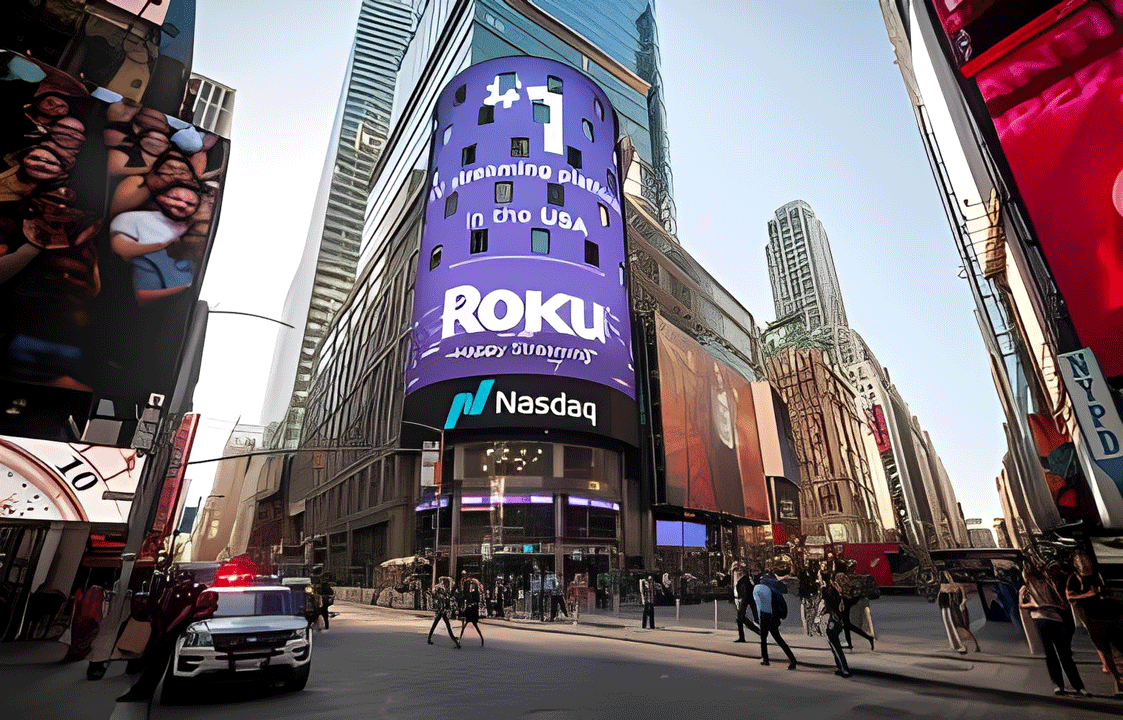
Cinematic Brilliance: Exploring HDR, 4K, and Dolby Vision on Roku for a Visual Spectacle
That’s an excellent topic for a deep dive! Achieving “cinematic brilliance” with 4K, HDR, and Dolby Vision on your Roku setup requires the right hardware and correct settings.
Here is an exploration of what you need and how to set it up:
I. The Core Requirements for Cinematic Brilliance
To experience 4K resolution, High Dynamic Range (HDR10/HDR10+), and Dolby Vision, your entire viewing chain must be compatible:
- Compatible Roku Device: You need a Roku player or Roku TV model that explicitly supports 4K, HDR, and Dolby Vision.
- Top Roku Players for this:
- Roku Ultra (Typically supports 4K, HDR10/10+, and Dolby Vision)1
- Roku Streaming Stick 4K (Typically supports 4K, HDR10/10+, and Dolby Vision)2
- Check the specific model number’s specs, as features can change with new releases.
- Top Roku Players for this:
- Compatible 4K HDR TV: Your television must support:
- 4K Resolution (3
pixels).4
- HDR Format: It must be compatible with the specific HDR format you want (HDR10, HDR11+, and/or Dolby Vision).
- HDCP 2.2: The HDMI port you use on the TV must support HDCP 2.2 copy protection.5
- 4K Resolution (3
- High-Speed Cable: Use a Premium High Speed HDMI Cable or an Ultra High Speed HDMI Cable. Older or basic HDMI cables may not have the bandwidth for 4K and HDR at a smooth frame rate (60fps).6
- Compatible Content: The movie or show you are watching must be available in 4K, HDR, and/or Dolby Vision from the streaming service (e.g., Netflix, Disney+, Max). Look for the 4K, HDR, or Dolby Vision logos on the content description.
II. Configuring Your Roku for Best Picture
Once you have the right equipment, you’ll need to confirm the settings on both your TV and your Roku device.
1. TV Settings (Crucial Step!)
Most TVs do not enable full-bandwidth HDMI features by default. You must manually enable a special mode for the specific HDMI port your Roku is plugged into.
- Locate the Setting: This setting is often called HDMI UHD Color, Enhanced Format, Deep Color, or Standard/Enhanced Mode within your TV’s picture or input settings menu.7
- Enable the Feature: Go into your TV’s settings, navigate to the Input/HDMI settings, select the HDMI port your Roku is connected to, and enable the high-bandwidth mode (e.g., “Enhanced” or “Standard”).
2. Roku Display Settings
The Roku player should automatically detect your TV’s best capabilities, but it’s good to verify:
- Go to Home on your Roku remote.
- Navigate to Settings > Display type.
- Select Automatic (recommended). The Roku will test and select the best resolution and HDR/Dolby Vision capability, usually showing something like “4K Dolby Vision HDR TV” or “4K HDR TV”.
- If the automatic selection is wrong or if you’re having issues, you can sometimes try a manual selection like 4K HDR 60Hz or 4K Dolby Vision HDR TV.
Advanced Tip (Roku Ultra):
In Settings > System > Advanced System Settings > Advanced Display Settings, ensure the “Dolby Vision always on” or “HDR always on” setting is disabled (off). This allows the Roku and TV to switch only when viewing actual HDR/Dolby Vision content, preventing non-HDR content from looking dull or washed out.
III. Understanding the Formats
- 4K (Ultra HD): This is the resolution.8 It provides a picture with four times the pixels of standard HD, resulting in much sharper detail.9
- HDR (High Dynamic Range): This is the color and contrast.10 It delivers a much wider range of colors, deeper blacks, and brighter highlights, making the image much more realistic and vibrant.
- HDR10/HLG: A common, open standard for HDR.
- Dolby Vision: A premium, proprietary HDR format that uses dynamic metadata, meaning the brightness and contrast can be adjusted scene-by-scene or even frame-by-frame, offering superior picture quality.11 If your TV supports Dolby Vision, it’s generally the preferred format.
That’s an excellent topic for a deep dive! Achieving “cinematic brilliance” with 4K, HDR, and Dolby Vision on your Roku setup requires the right hardware and correct settings.
Here is an exploration of what you need and how to set it up:
I. The Core Requirements for Cinematic Brilliance
To experience 4K resolution, High Dynamic Range (HDR10/HDR10+), and Dolby Vision, your entire viewing chain must be compatible:
- Compatible Roku Device: You need a Roku player or Roku TV model that explicitly supports 4K, HDR, and Dolby Vision.
- Top Roku Players for this:
- Roku Ultra (Typically supports 4K, HDR10/10+, and Dolby Vision)1
- Roku Streaming Stick 4K (Typically supports 4K, HDR10/10+, and Dolby Vision)2
- Check the specific model number’s specs, as features can change with new releases.
- Top Roku Players for this:
- Compatible 4K HDR TV: Your television must support:
- 4K Resolution (3
pixels).4
- HDR Format: It must be compatible with the specific HDR format you want (HDR10, HDR11+, and/or Dolby Vision).
- HDCP 2.2: The HDMI port you use on the TV must support HDCP 2.2 copy protection.5
- 4K Resolution (3
- High-Speed Cable: Use a Premium High Speed HDMI Cable or an Ultra High Speed HDMI Cable. Older or basic HDMI cables may not have the bandwidth for 4K and HDR at a smooth frame rate (60fps).6
- Compatible Content: The movie or show you are watching must be available in 4K, HDR, and/or Dolby Vision from the streaming service (e.g., Netflix, Disney+, Max). Look for the 4K, HDR, or Dolby Vision logos on the content description.
II. Configuring Your Roku for Best Picture
Once you have the right equipment, you’ll need to confirm the settings on both your TV and your Roku device.
1. TV Settings (Crucial Step!)
Most TVs do not enable full-bandwidth HDMI features by default. You must manually enable a special mode for the specific HDMI port your Roku is plugged into.
- Locate the Setting: This setting is often called HDMI UHD Color, Enhanced Format, Deep Color, or Standard/Enhanced Mode within your TV’s picture or input settings menu.7
- Enable the Feature: Go into your TV’s settings, navigate to the Input/HDMI settings, select the HDMI port your Roku is connected to, and enable the high-bandwidth mode (e.g., “Enhanced” or “Standard”).
2. Roku Display Settings
The Roku player should automatically detect your TV’s best capabilities, but it’s good to verify:
- Go to Home on your Roku remote.
- Navigate to Settings > Display type.
- Select Automatic (recommended). The Roku will test and select the best resolution and HDR/Dolby Vision capability, usually showing something like “4K Dolby Vision HDR TV” or “4K HDR TV”.
- If the automatic selection is wrong or if you’re having issues, you can sometimes try a manual selection like 4K HDR 60Hz or 4K Dolby Vision HDR TV.
Advanced Tip (Roku Ultra):
In Settings > System > Advanced System Settings > Advanced Display Settings, ensure the “Dolby Vision always on” or “HDR always on” setting is disabled (off). This allows the Roku and TV to switch only when viewing actual HDR/Dolby Vision content, preventing non-HDR content from looking dull or washed out.
III. Understanding the Formats
- 4K (Ultra HD): This is the resolution.8 It provides a picture with four times the pixels of standard HD, resulting in much sharper detail.9
- HDR (High Dynamic Range): This is the color and contrast.10 It delivers a much wider range of colors, deeper blacks, and brighter highlights, making the image much more realistic and vibrant.
- HDR10/HLG: A common, open standard for HDR.
- Dolby Vision: A premium, proprietary HDR format that uses dynamic metadata, meaning the brightness and contrast can be adjusted scene-by-scene or even frame-by-frame, offering superior picture quality.11 If your TV supports Dolby Vision, it’s generally the preferred format.
By ensuring all parts of your system—the player, the cable, the TV port setting, and the content—are 4K, HDR, and/or Dolby Vision compliant, you will unlock the full cinematic brilliance your Roku is capable of.12


